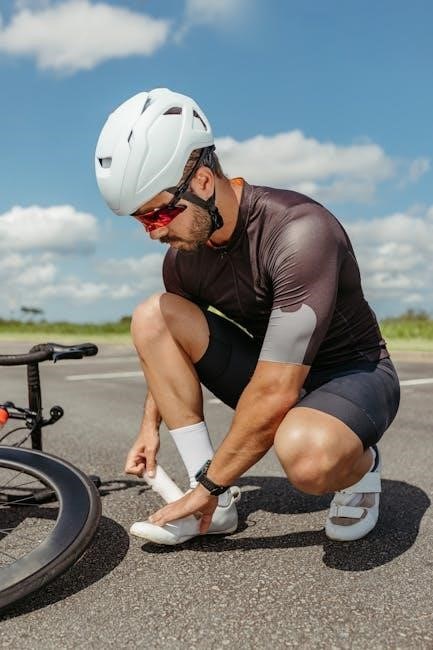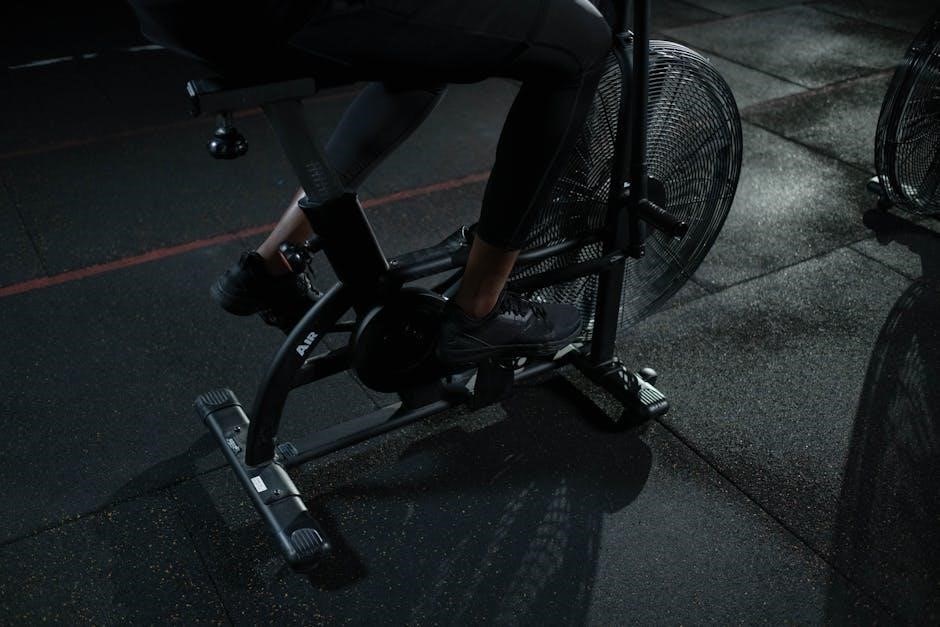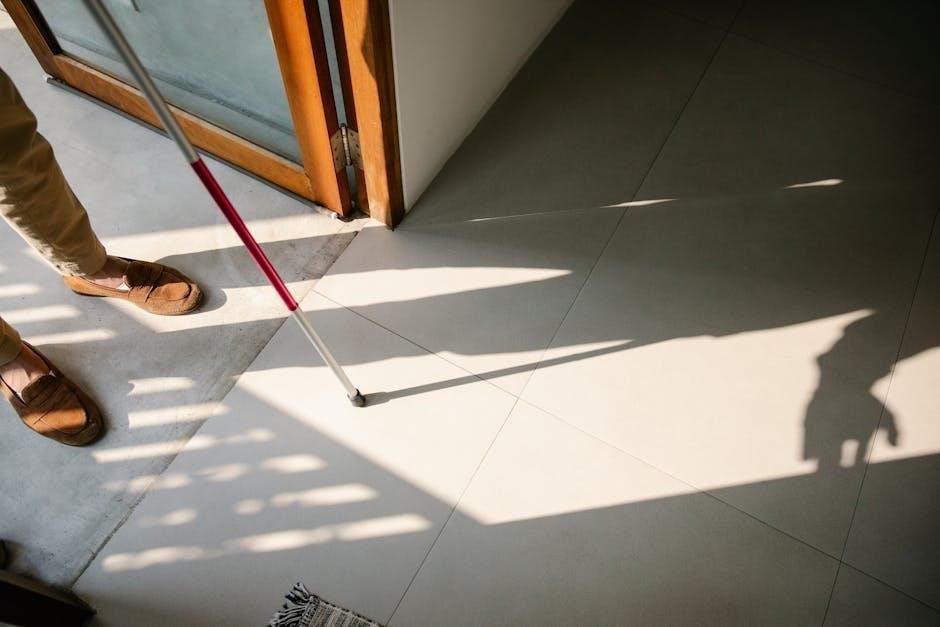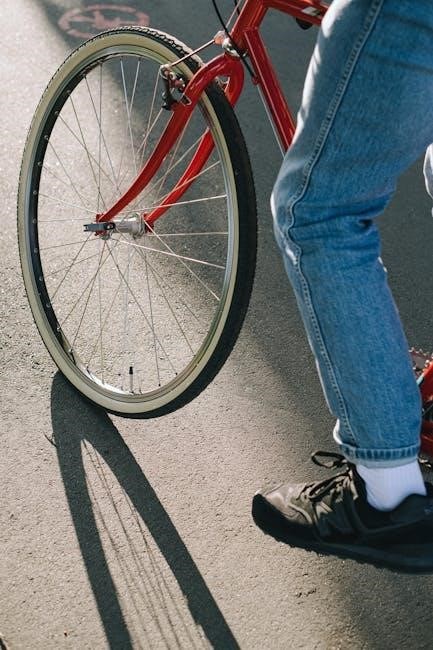
Cycling Shoe Size Guide: Finding the Perfect Fit
Navigating the world of cycling footwear requires precision; a proper fit enhances performance and comfort;
This guide details how to accurately measure your feet and select the ideal cycling shoe size,
considering brand variations and specific cycling disciplines for an optimal riding experience.
Understanding Cycling Shoe Sizing Differences
Unlike standard shoe sizing, cycling shoes often run smaller and prioritize a snug, performance-oriented fit. Manufacturers employ varying sizing standards, meaning a US size 9 in one brand might not equate to the same in another.
Many brands utilize millimeter (mm) measurements for internal shoe length, offering greater accuracy than traditional sizing. Furthermore, width is a critical factor often overlooked in conventional shoe fitting. Cycling shoes frequently offer different width options to accommodate diverse foot shapes, preventing pressure points and discomfort.
Road cycling shoes typically require a tighter fit than mountain biking shoes, influencing size selection. Online purchases present challenges due to the inability to try shoes on, highlighting the importance of understanding return policies and detailed size charts. Prioritizing internal length (in mm) over US/EU/UK sizing is highly recommended for a more reliable fit.
Why Cycling Shoe Fit is Crucial
A precise cycling shoe fit is paramount for both performance and preventing injuries. Ill-fitting shoes can lead to discomfort, blisters, hot spots, and even long-term foot problems. A snug fit maximizes power transfer from your legs to the pedals, enhancing efficiency and speed.
Sufficient toe room – approximately 1.5cm – is essential to accommodate foot swelling during rides and prevent cramped toes. Proper width prevents pressure points that can cause numbness or pain. A secure heel hold minimizes slippage, improving control and responsiveness.
Ignoring fit can compromise your cycling experience, leading to fatigue and reduced enjoyment. Investing time in finding the right size and considering your cycling discipline ensures optimal comfort, power, and overall performance on every ride.
Measuring Your Feet for Cycling Shoes
Accurate foot measurements are the foundation of finding the perfect cycling shoe fit. Begin by tracing your foot on a piece of paper while standing, ensuring your weight is evenly distributed. Measure the length from the heel to the longest toe in millimeters (mm) – repeat for both feet, as sizes can differ.
Don’t rely solely on your usual shoe size, as cycling shoes often run smaller. Measuring foot width is also crucial; use a ruler to determine the widest part of your foot. Consider measuring later in the day when your feet are naturally more swollen.
Record both length and width measurements for precise size selection when referencing brand-specific charts.
Accurate Foot Length Measurement

To achieve an accurate foot length measurement, place a piece of paper against a wall and stand with your heel touching the wall. Trace around your foot carefully, ensuring the pen or pencil is held vertically. Measure the distance from the back of your heel to the tip of your longest toe in millimeters (mm).
It’s vital to measure both feet, as discrepancies in length are common. Use the larger measurement when determining your cycling shoe size. Repeat the process a couple of times to confirm consistency. Remember to wear the socks you intend to use while cycling during measurement.
Precise length measurement is the first step towards a comfortable and efficient ride.
Foot Width Measurement: Importance and Methods

Foot width is often overlooked, yet it’s crucial for cycling shoe comfort and preventing pressure points. Unlike length, width isn’t always standardized across brands. To measure, find the widest part of your foot and measure across it in millimeters.

One method involves using a flexible measuring tape. Alternatively, after tracing your foot (as described for length), mark the widest points on the tracing and measure between them. Pay attention to whether you have a narrow, standard, or wide foot.
Ignoring width can lead to discomfort, numbness, or even blisters. Prioritize width alongside length for a truly optimized fit, especially when ordering online.
Converting Measurements to Cycling Shoe Sizes
Once you have your foot length in millimeters (mm), converting to cycling shoe sizes becomes the next step. However, direct conversion from standard shoe sizes can be unreliable, as cycling shoe sizing varies significantly. Focus on the manufacturer’s specific size chart, utilizing the mm measurement for the most accurate match.

Avoid relying solely on US, EU, or UK sizing, as these can differ between brands. Many manufacturers recommend matching your current cycling shoe’s internal length (in mm) to their chart; If you’re new to cycling, use your foot length measurement as the primary guide.
Remember, this is a starting point; always consider brand-specific nuances and fit considerations.
Using Millimeter (mm) Measurements for Accuracy
Millimeter measurements offer the highest degree of accuracy when determining your cycling shoe size. Unlike standard shoe sizing, which can vary widely, mm measurements represent the actual length of your foot, providing a consistent benchmark for comparison across different brands and models.
Manufacturers often provide internal shoe length measurements in millimeters on their size charts. Matching your foot’s length (in mm) to this internal length is the most reliable method for finding the correct size. This approach minimizes the risk of ordering shoes that are too small or too large.
Prioritize mm measurements, especially when purchasing online, to ensure a comfortable and performance-enhancing fit.
Comparing to Existing Shoe Sizes (with Caution)
While referencing your current shoe size can be a starting point, relying solely on it for cycling shoes is often misleading. Cycling shoe sizing differs significantly from regular footwear, typically running smaller and designed for a snug, performance-oriented fit.
If you choose to compare, focus on a well-fitting athletic shoe, not a casual one. However, always prioritize the manufacturer’s specific size chart and, crucially, the internal shoe length in millimeters. Do not directly translate US/EU/UK sizing, as inconsistencies are common.
Use your existing size as a rough guide, but always verify with accurate foot measurements and the brand’s detailed sizing information to avoid disappointment and potential returns.
Brand-Specific Size Charts
Understanding that cycling shoe sizing isn’t standardized, consulting brand-specific charts is paramount for a successful purchase. Manufacturers employ unique lasts (the foot-shaped form around which the shoe is built), impacting fit even with identical numerical sizes.
Lake Cycling Shoes, for example, provides detailed instructions for measuring both length and width, offering a notably accurate size chart. Conversely, some brands offer charts with only length measurements, increasing the risk of an ill-fitting purchase, especially online.
Shimano and Specialized also have their own distinct sizing guidelines. Always prioritize the chart provided by the specific brand you intend to buy, and remember to cross-reference with your measured foot dimensions.
Lake Cycling Shoes: Detailed Sizing Instructions
Lake Cycling distinguishes itself with exceptionally thorough sizing guidance. They recommend matching the centimeter (CM) or Japanese (JP) number found on your current cycling shoes to their internal shoe length measurement in millimeters (MM). This method, assuming accurate labeling on your existing shoes, provides a reliable size match.
Crucially, Lake advises against relying on US/EU/UK sizing conversions, as these can be inconsistent. They strongly encourage printing their sizing page for accurate comparison. Lake’s process emphasizes both length and width measurements, recognizing the importance of a holistic fit.
Following these detailed instructions significantly increases the likelihood of selecting the correct size, minimizing the need for returns and maximizing comfort on your rides.
Shimano Cycling Shoe Size Charts
Shimano, a leading cycling component manufacturer, provides size charts that typically focus on internal shoe length measured in millimeters (mm). While they offer conversions to US, EU, and UK sizes, relying solely on these can be misleading due to variations between brands and models.
Shimano emphasizes the importance of accurately measuring your foot length and comparing it directly to their mm measurements. Their charts often categorize shoes by model type (road, mountain, etc.), acknowledging that fit preferences can differ based on discipline.
It’s crucial to consult the specific chart for the Shimano shoe model you’re considering, as sizing can vary. Remember that cycling shoes are designed to fit snugly, so a small amount of toe room (around 1.5cm) is recommended for comfort during rides.
Specialized Cycling Shoe Size Charts
Specialized provides comprehensive sizing guidance, advocating for matching the internal shoe length (in millimeters) to your foot measurement for the most accurate fit. They strongly advise against relying on standard US/EU/UK sizing conversions, as discrepancies are common across brands.
Specialized’s charts often include a “foot length (mm)” column alongside corresponding sizes, allowing for direct comparison. They also highlight the importance of considering foot width, as some models are available in wider widths to accommodate different foot shapes.
Like other brands, Specialized recommends approximately 1.5cm of toe room. Their online resources often feature printable sizing guides and detailed instructions on how to measure your feet correctly, minimizing the risk of ordering the wrong size;

Key Fit Considerations
Achieving a perfect cycling shoe fit goes beyond simply matching a size chart. Prioritize adequate toe room – a minimum of 1.5cm is crucial, allowing for natural foot expansion during exertion and preventing discomfort. This space prevents your toes from jamming against the front of the shoe on long rides.

Width is equally important; avoid pressure points by ensuring the shoe comfortably accommodates the widest part of your foot. A snug, but not constricting, fit is ideal. Consider wider shoe options if you have broader feet. Proper arch support is also vital for comfort and power transfer.

Remember, a well-fitting shoe enhances performance and prevents injuries. Don’t compromise on fit – it’s a foundational element of enjoyable cycling!
Toe Room: The 1.5cm Rule
The 1.5cm (approximately half an inch) toe room rule is paramount when selecting cycling shoes. This isn’t about simply having extra space; it’s a critical factor for comfort and performance during rides. Your feet will naturally expand, especially during intense activity, and this space accommodates that expansion, preventing painful toe jamming.
Without sufficient toe room, you risk blisters, numbness, and reduced blood circulation. To check, press down on the toe box while your foot is fully inserted. You should feel a small gap – around 1.5cm – between your longest toe and the end of the shoe.
Ignoring this rule can lead to significant discomfort and negatively impact your cycling experience. Prioritize this measurement for a truly comfortable and efficient fit.
Width and Avoiding Pressure Points
Beyond length, width is a crucial, often overlooked, aspect of cycling shoe fit. A shoe that’s too narrow will create pressure points, leading to discomfort, numbness, and even potential long-term foot problems. Conversely, a shoe that’s too wide won’t provide adequate support, causing your foot to slide around within the shoe.
Pay close attention to the width of your foot, especially if you have wider feet. Some brands offer shoes in multiple widths. When trying on shoes, walk around and mimic the pedaling motion to identify any areas of constriction or rubbing.
Focus on avoiding pressure points, particularly across the ball of your foot and along the sides. A comfortable fit should feel snug but not constricting, allowing for natural foot movement.
Dealing with Online Purchases and Returns
Purchasing cycling shoes online presents unique challenges due to the inability to try them on before buying. Manufacturers’ size charts can be inconsistent, and relying solely on your usual shoe size is often inaccurate. Expecting a perfect fit on the first attempt is unrealistic; returns are frequently necessary.
Before ordering, thoroughly research the brand’s sizing reputation and read customer reviews regarding fit. Carefully measure your feet and compare those measurements to the specific brand’s size chart, prioritizing millimeter (mm) measurements.
Understand the retailer’s return policy before completing your purchase. Look for hassle-free returns and exchanges, as you may need to try multiple sizes or even different brands to find the perfect fit. Keep all original packaging!
The Challenges of Buying Cycling Shoes Online
Online cycling shoe shopping introduces complexities absent in brick-and-mortar stores. The primary hurdle is the inability to physically assess the fit, leading to potential sizing errors. Unlike standard shoes, cycling shoes require a snug, precise fit for optimal power transfer and comfort, making accurate sizing crucial.
Brand-specific sizing variations further complicate matters; a size 42 in one brand may not equate to the same fit in another. Relying on converted sizes (US/EU/UK) is discouraged, as internal shoe length (in millimeters) offers greater accuracy.
Furthermore, foot shape – width, arch height – significantly impacts fit, factors difficult to gauge online. The risk of needing returns is high, and navigating return shipping costs and procedures can be frustrating.
Return Policies and Exchange Options
When purchasing cycling shoes online, thoroughly investigate the retailer’s return policy before completing your order. A generous return window (30-60 days is ideal) is essential, allowing ample time to assess the fit during several rides. Understand if return shipping is free, or if you bear the cost – this can significantly impact the overall expense.
Check if the retailer offers exchange options, streamlining the process of obtaining the correct size. Some brands, like Lake Cycling, are noted for detailed sizing guidance, potentially reducing return rates. Be aware of restocking fees, if any, and the condition requirements for returned shoes (typically unworn, with original tags).
Document the entire process – screenshots of the policy, order confirmation, and shipping details – for potential dispute resolution.
Cycling Discipline and Shoe Fit
The demands of different cycling disciplines influence optimal shoe fit. Road cycling prioritizes a snug, efficient fit for power transfer; shoes are typically tighter, with minimal toe room (around 1.5cm is still recommended). Stiffness is paramount, often requiring a precise fit to maximize pedaling efficiency.
Mountain biking, conversely, necessitates a more relaxed fit, accommodating foot swelling during strenuous climbs and descents. Increased toe room is crucial for navigating technical terrain, and shoes often feature more robust protection. Width is also important, allowing for natural foot movement and preventing pressure points.
Consider the specific terrain and riding style within each discipline when selecting shoe size and features.
Road Cycling Shoe Fit
For road cycling, a precise and snug fit is paramount, maximizing power transfer and efficiency. Shoes should feel secure around the foot, minimizing any unwanted movement within the shoe. Aim for approximately 1.5cm of toe room, acknowledging potential foot swelling during longer rides.
Stiffness is a key characteristic of road cycling shoes; a tight fit enhances the shoe’s ability to transmit force to the pedals. Pay close attention to width, ensuring no pressure points develop, particularly during high-intensity efforts. A properly fitted road shoe should feel like an extension of your foot, allowing for comfortable, powerful pedaling.
Prioritize a fit that supports your arch and doesn’t cause discomfort, even after hours in the saddle.
Mountain Biking Shoe Fit
Unlike road cycling, mountain biking demands a slightly more relaxed fit, prioritizing comfort and control over absolute power transfer. While still snug, mountain bike shoes allow for more foot movement, crucial for hiking sections and navigating technical terrain.
Toe room remains important – around 1.5cm is recommended – to accommodate swelling and prevent discomfort during climbs. However, a looser fit is acceptable compared to road shoes. Focus on secure heel retention to prevent lifting during pedaling and descents.
Consider the shoe’s stiffness; mountain bike shoes are generally less stiff than road shoes, offering better grip when off the bike. A comfortable, secure fit is vital for confident handling and efficient pedaling on varied trails.
Addressing Foot Swelling During Rides

Foot swelling is a common occurrence during cycling, particularly on longer rides or in warmer weather. Blood flow increases to the feet, causing them to expand, which can lead to discomfort if your shoes are too tight. Therefore, accounting for potential swelling is crucial when determining your cycling shoe size.
The recommended 1.5cm of toe room provides space for this expansion. Consider measuring your feet later in the day, when they are naturally more swollen. If you consistently experience discomfort, even with adequate toe room, consider sizing up half a size.

Proper sock choice also plays a role; thinner, moisture-wicking socks can help manage swelling. Regularly check your feet during longer rides for any signs of pressure points or discomfort, and adjust your shoes accordingly.
When to Size Up or Down
Determining whether to size up or down requires careful consideration of several factors. If your toes consistently brush the end of the shoe, even with a slight bend, sizing up is advisable. Conversely, if you experience excessive heel slippage or the shoe feels overly roomy, a smaller size might be necessary.
Remember that cycling shoes should fit snugly, but not constrictively. If you’re between sizes, opting for the wider option is generally recommended, especially if you have wider feet. Online purchases often necessitate returns, so don’t hesitate to experiment.
Pay attention to how the shoe feels during a short test ride, mimicking the pressure and movement of actual cycling. Prioritize comfort and avoid assuming a shoe will “break in” significantly.